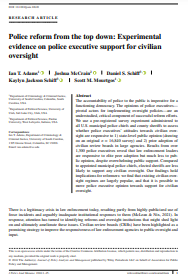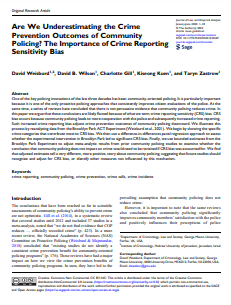By Thomas Sloan, Molly Pickard, Johanna Lacoe, Mia Bird and Steven Raphael
Since March 2020, Los Angeles County has experienced several distinct shifts in bail policy, shaping how people experience the pretrial process and igniting a dialogue about bail reform, equity, and safety. During the COVID-19 pandemic, LA County implemented an emergency bail schedule for most misdemeanors and low-level felonies (sometimes referred to as “zero bail”). In July 2022, LA County returned to the normal bail schedule, where a person who is arrested could pay the amount specified by the bail schedule and immediately be released from custody before their first court date. In May 2023, a successful court challenge to bail practice caused the Los Angeles Police and Sheriff's Departments to return to the emergency bail schedule. This was followed shortly thereafter by the countywide implementation of a new, more permanent approach to pretrial release decisions — the Pre-Arraignment Release Protocols (PARPs) — in October 2023. Under the PARPs, no monetary bail is set for people arrested for certain lower-level offenses, and for some offenses judges are able to consider additional information when making a release decision, such as criminal history, previous failures to appear for court, and risk assessment recommendations.
KEY FINDINGS We leverage these three distinct policy shifts to estimate the short-run effects of bail policy changes on jail populations, crime reports, and arrests. We find:
Removing the emergency bail schedule and reverting back to cash bail increased average daily jail populations with no short term effect on citywide crime. The retraction of the emergency bail schedule in July 2022 resulted in a statistically significant increase in the average daily jail population over the following two months, and no change in arrests or crime reports.
Reinstating the emergency bail schedule did not change the average county daily jail population or total citywide crime in the following two months, but some property crimes increased. The resumption of the emergency bail schedule in May 2023 did not cause the average daily jail population to vary from its pre-period decline, but did cause a decline in pretrial jail population beyond the pre-period trend. At the same time, there was no statistically significant change in total crime reports or arrests, but reports of property crime increased relative to the pre-period trend.
The PARPs decreased daily overall and pretrial county jail populations in the two months after implementation, with no effect on citywide crime. The daily pretrial jail population decreased by over 200 people (or three percent) on average relative to the pre-period trend following the implementation of the PARPs. Despite the decrease in people held in jail, there was no change in any measure of reported crime during the same period. Arrests for misdemeanor offenses declined, while overall arrest trends did not change. Despite concerns that these bail reforms would lead to increases in crime, we do not observe consistent changes in total crime in the City of Los Angeles for the two months following these bail policy shifts. In addition, a return to the standard bail schedule increased daily jail populations but did not reduce crime. Early evidence from the PARPs suggests that the approach can reduce jail populations while maintaining public safety, particularly during the pretrial period.
Los Angeles: California Policy Lab, Committee on Revision of the Penal Code 2024. 51p.




















